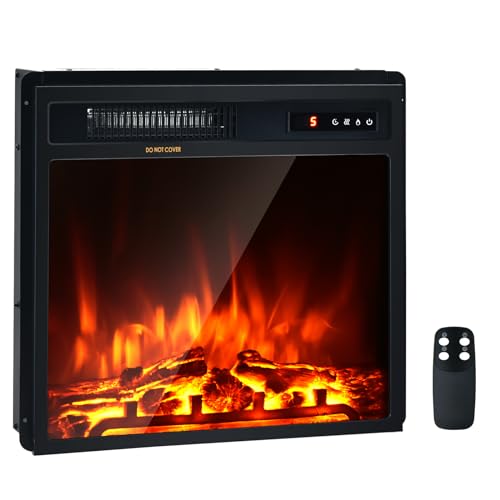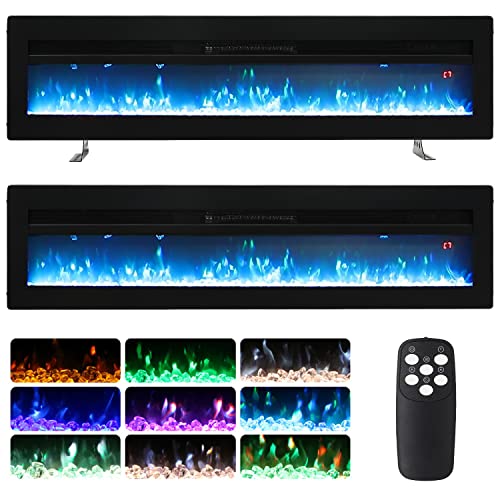The 9 Things Your Parents Taught You About Wood Heater Stove
페이지 정보
작성자 Eddy 작성일25-01-28 14:28 조회6회 댓글0건관련링크
본문
 Proper Use and Maintenance of a cheap wood burning stoves Heater Stove
Proper Use and Maintenance of a cheap wood burning stoves Heater StoveA wood stove is a cozy place to warm up and can heat a whole home. However, certain devices emit harmful gases like creosote which could be harmful to health and property.
It is important to maintain these stoves. Some of the most important points to remember are to avoid overheating the space or tinkering with the fire, and using properly-dried firewood.
Fuel
Wood stoves can burn a variety fuels that include dry wood, as well as manufactured solid fuels like briquettes or fire logs. These fuels that are clean burning are more environmentally friendly than traditional house coal and wet wood, therefore they are better for the environment and safer to use. However, they emit gasses and smoke, and require regular maintenance to keep them working at their best.
Check the manufacturer's instructions before purchasing or using any type of fuel. Make sure it's the right fuel for your stove. Unsuitable fuels can damage your chimney or stove, leading to expensive repairs and voiding your warranty. It's illegal to use fuel that is not approved particularly in smoke control zones. Check for the 'Ready to Burn logo, which demonstrates that the fuel meets the smoke emission and sulphur limits, and can be legally sold for domestic use. The logo is often displayed along with the details of the price and brand or on the packaging.
The appropriate fuels must be prepared (stored and split for several months before use) or kiln dried to reduce the amount of moisture which boosts heat output and efficiency in combustion. The kind of outside wood burners you choose should also suit your heating requirements. Softwoods such as pine and spruce offer good value for money, but hardwoods like oak and beech generate more hot embers, and they do so over a longer period of time. Fruitwoods such as apple and cherry do not just provide efficient heating but also elevate the ambiance by their pleasant scents.
If you have a multi-fuel stove, consider a mixed fuel stove; Combining wood with smokeless briquettes can help to keep the flames going and warm your home for a longer period of time. Briquettes can be used as a back-up and can help to keep a chimney from burning by keeping the air moving.
A well-maintained stove will generate more heat, burn less fuel and create less harmful particles. If you own a wood or gas-fired stove, make sure it is installed by a registered installer. Regularly serviced appliances are more efficient and safeguard your health and the environment by preventing harmful emissions.
Design
The design of wood stoves is an important aspect to consider when considering their use as a primary or secondary source of heat. Unwanted byproducts from combustion, like carbon monoxide and smoke, can be harmful to health and environmental impact. The key to minimizing the emission of these gases is to ensure proper operation and a well-planned design.
Modern wood stoves are more eco sustainable than older models. All stoves certified by the EPA meet strict emissions and energy efficiency guidelines that maximize the amount of heat they produce. Look for a metal EPA certification mark on the back of the stove or look through the EPA's current database to see the stove is certified. Going to local hearth stores who are knowledgeable about the performance of their selection is an excellent way to find out more about wood stoves and which size and capacity might be best for your space.
A key part of the EPA emission regulations is controlling air flow through the stove. The firebox of the stove is surrounded by a wall of fireproof materials, and air vents are placed within the walls to allow controlled airflow. The control of airflow is essential to ensure that the combustion process is optimal and emissions are minimized.
modern wood burning stove stoves often have baffles that increase the duration of the fire and reduces the amount of fumes and harmful gases. Certain wood stoves also employ a catalytic converter to reduce NOx emissions. This system is more expensive and used only in high-end wood burning stoves.
Stoves also utilize different types of air control systems to regulate the airflow through the stove. Most indoor wood burner stoves have a basic passive air supply and require that the user (you), operate the stove in a way that allows the best performance. Some stoves feature active air supplies that are controlled by sensors. These sensors monitor the combustion process, and wood heater stove adjust the air supply when required.
Wood stoves are an excellent alternative for heating homes in remote areas or that aren't connected to the electric grid. But, if you do not have a backup energy source that you can rely on during an interruption or a snowstorm, a wood stove should not be your only option for heating your home.
Heat output
Many wood stoves advertise their maximum heat output in BTUs. This is a false statement however, since the actual capacity of the wood stove is dependent on a variety of variables like the size of the room as well as the degree of insulation.
The climate also has an impact on the requirements for heat. Regions that are colder require stoves with greater BTU rating to maintain the temperature.
Other factors that affect the production of heat include the kind of wood used and the frequency of fueling. Dry, seasoned wood creates more heat than freshly-cut and wet logs. The use of a stove fan can also help move the heat generated by the wood burner into the room instead of having the hot air rise upwards.
It is important to remember that the maximum output of a wood heater stove (simply click the up coming post) should not be reached frequently because continuous high-fire can cause damage to a stove's innards and can cause carbon monoxide to escape into the home.
The performance of a stove can be enhanced by regular refueling. Make sure that the log is not too big and is placed on the glowing embers so that it doesn't touch the glass or the walls of the stove. Add smaller logs more frequently, rather than waiting too long between additions.
High efficiency stoves are designed to achieve a higher level of heat output with the same amount of fuel by providing pre-heated combustion air, as well as other design features. These stoves often produce less smoke, toxins, and carbon monoxide than older models.
Some people choose to install boiler stoves as element of their heating system. The heat produced by the wood-burning stove to heat water in hot water tanks or a central heating system, which allows the heat to be distributed throughout a home. This is an efficient and cost-effective method to heat a home however the process of installation can be very extensive. This method requires a flue that is not already installed and the energy required to run the boiler can increase the total cost.
Safety
Wood stoves and fireplaces are attractive and a convenient method of heating a home. They are not without risks. A fire can cause furniture or carpets to catch fire and a fireplace that is hot can cause structural damage to your home. A proper use and maintenance of a wood-burning stove minimizes these dangers.
To ensure that wood-burning stoves are safe and in good shape they must be regularly checked and maintained. This includes inspecting the chimney and flue at least twice each year for Wood Heater Stove signs of rust or wear and cleaning them. The chimney should also be checked halfway through the season to check for creosote accumulation, which is extremely flammable and could cause chimney fires.
When buying a stove for wood burning make sure you choose one that has been certified by Underwriters Laboratories (UL) or another lab recognized for testing. This guarantees that the stove complies with the safety standards set by the federal government and is engineered to vent properly. Check the legs, hinges, and grates to ensure they are in good condition and securely secured to the floor of the stove.
If you choose to install a wood-burning stove inside your home, make sure the floor underneath it is reinforced and made from non-combustible materials. You can also put tiles that are not combustible over your flooring in the event that it is fire-proof.
Burn only seasoned, dry hardwoods. Green and damp wood can produce excessive smoke and creosote. This flammable byproduct can build within your chimney, which releases harmful chemicals. Avoid burning cardboard, trash, paper or any other combustibles, as they can create dangerous fumes and not even ignite.
Never "over fire" your wood stovewhich is to create a larger fire than the stove can handle. Over-fired stoves can lead to flames leaving the combustion chamber, causing damage to the chimney connector, the stove and chimney itself, and also burning other combustible material in your home. It is also essential to ensure that the fire is completely extinguished before leaving your cabin or going to bed. Smoke detectors and carbon monoxide detectors must be working throughout the day.

Warning: Use of undefined constant php - assumed 'php' (this will throw an Error in a future version of PHP) in /data/www/kacu.hbni.co.kr/dev/skin/board/basic/view.skin.php on line 152
댓글목록
등록된 댓글이 없습니다.

